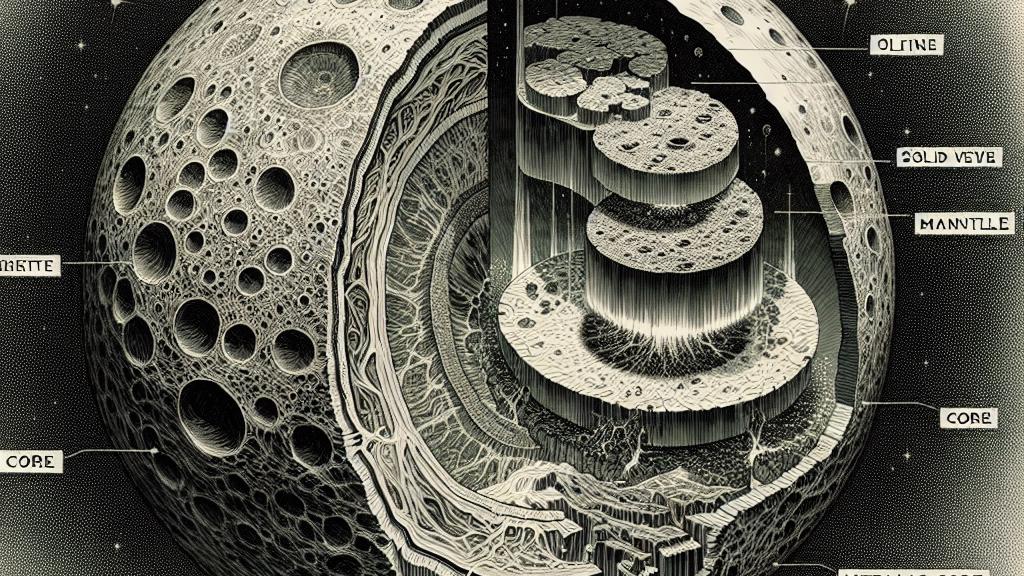Exploring the Moon's Inner Secrets: Evidence of a Partially Molten Mantle Layer
Overview
- New lunar research suggests the intriguing possibility of a partially molten layer within the Moon's mantle.
- Advanced gravity measurements reveal complexities of the Moon’s internal structure and its evolutionary path.
- Understanding this molten layer could dramatically reshape our views on the Moon’s formation and geological activity.

Unveiling the Moon's Hidden Composition
The Moon, a beacon in our night sky, continuously fascinates scientists and astronomy enthusiasts alike. Recent studies from teams in the United States have unlocked incredible revelations about its inner structure. Beneath its scarred and cratered exterior lies a solid olivine mantle, tucked above a metallic core. Yet, what truly captivates researchers is the prospect of a partially molten layer residing at the bottom of this mantle. This zone, potentially rich in a mineral called ilmenite, offers a dynamic character to the Moon’s geological narrative. Such findings not only enhance our understanding of the Moon's internal makeup but also force us to reconsider the processes that have shaped its history.
Gravity Measurements and Tidal Insights
The excitement doesn't stop there; NASA's GRAIL (Gravity Recovery and Interior Laboratory) mission has produced groundbreaking data, resulting in the most precise gravity map of the Moon ever created. By studying how the Moon's shape fluctuates under the gravitational influence of the Earth and the Sun, scientists have uncovered valuable mysteries lurking below the surface. They observed not only monthly shifts in gravity but also yearly variations, providing a comprehensive view of lunar dynamics. These extensive findings highlight gravitational irregularities that strongly infer the existence of a softer, semi-molten layer at the Moon's mantle base. Without acknowledging this crucial layer, models could fail to resonate with the actual data gathered from these meticulous measurements.
Exciting Implications for Our Understanding of the Moon
The existence of this partially molten layer could lead to significant advancements in our understanding of lunar and planetary science. It sparks vital questions about the heat sources sustaining this molten state over billions of years. Are these sources remnants of the Moon's formation, or do they indicate ongoing geological activity? This inquiry is particularly relevant not just to the Moon but to the formation of rocky planets throughout the solar system. As we continue to peel back the layers of the Moon’s mysteries, we open doors to new avenues of research that enhance our comprehension of not only our natural satellite but the very processes that govern planetary formation in our universe. Thus, the journey to explore the Moon's depths promises not only to enrich our knowledge but also to spark increased curiosity and study in planetary sciences.

Loading...